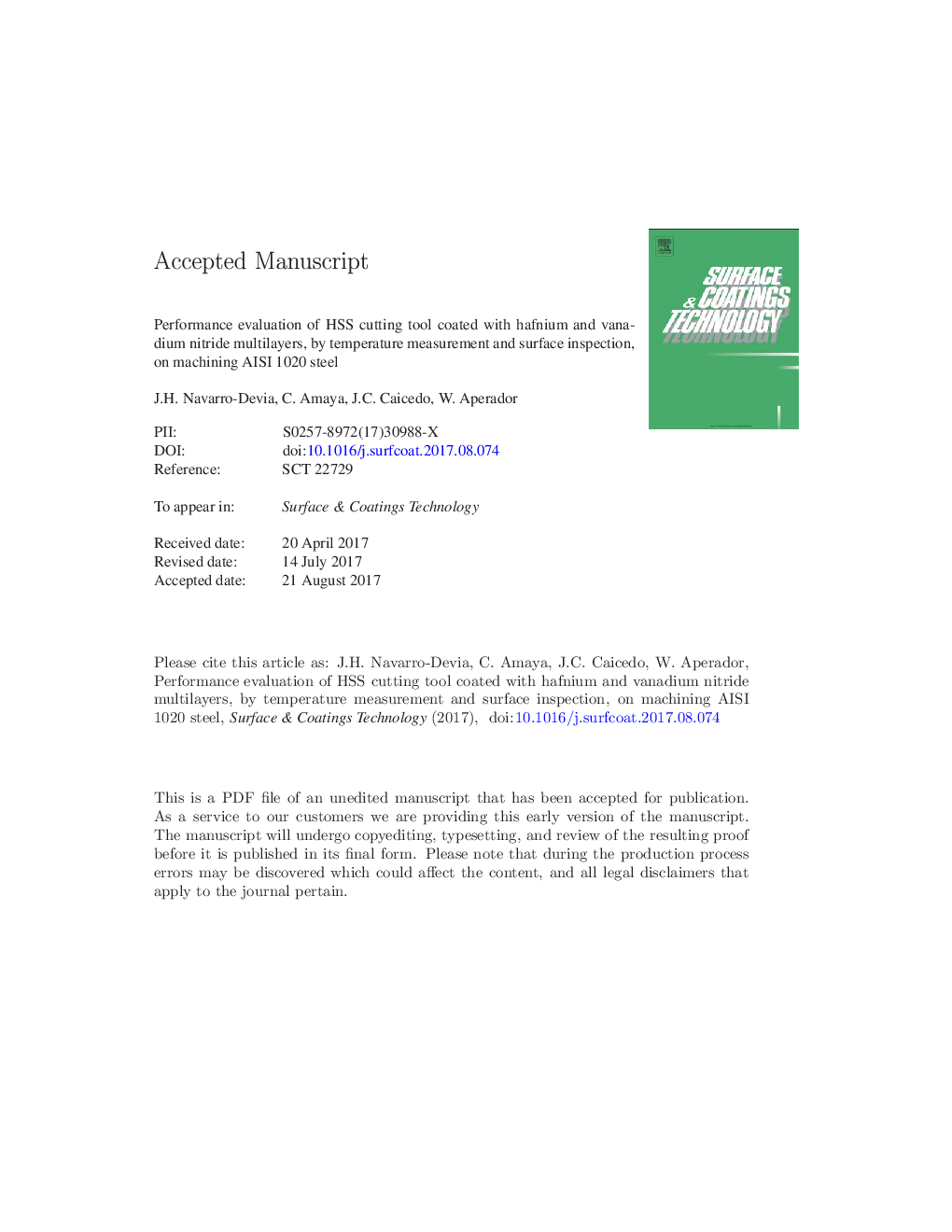| Article ID | Journal | Published Year | Pages | File Type |
|---|---|---|---|---|
| 8024781 | Surface and Coatings Technology | 2017 | 49 Pages |
Abstract
The hard coatings application on cutting tools improves the lifetime, performance and also quality of the workpiece, usually by increasing the wear resistance. Hafnium nitride and vanadium nitride multilayer coatings [HfN/VN]n present mechanical, tribological and physical-chemical properties that have been identified previously by other authors and are desirable for cutting tools. With physical vapor deposition (PVD) of hafnium nitride/vanadium nitride [HfN/VN]n multilayer coatings were deposited with bilayer numbers n = 1, n = 50 and n = 80 onto High-speed steel (HSS) cutting tools by using the Multi-target Magnetron Sputtering technique, the machining tools used as a substrate were burin ASSAB 17 steel. The uncoated tools and coated tools with HfN/VN multilayers were used to machine AISI 1020 steel bars at the same turning parameters by using a CNC machine. The cutting efficiency, machining quality, and tool wear are influenced by coating nature and the temperature, therefore, as an evaluation method the tool temperature, the steel temperature, and the machining chip temperature were measured by means an infrared sensor. The data analyses were carried out in MatLab, to identify average temperature and temperature rate for all machining tools. The superficial roughnesses (Ra) of workpieces were evaluated by using a roughness tester. Tool wear and surface wear mechanism were analyzed through Scanning Electron Microscopy (SEM). In this work it was found that temperature rates on machining tools and on machined workpieces were decreased, in relation to chip temperatures which exhibit an increasing. The workpiece roughness was reduced around 28%, and the wear rate was reduced around 50%, in relation to the uncoated and coated tools with [HfN/VN]n multilayers. Results showed in this research reveal that [HfN/VN]n multilayers, as function of bilayer number (n), improve the lifetime of the cutting tools due to the reduction of energy transfer and the increase in wear resistance, with low friction coefficient between cutting tool and workpiece evidenced in the surface roughness associated to the workpiece.
Related Topics
Physical Sciences and Engineering
Materials Science
Nanotechnology
Authors
J.H. Navarro-Devia, C. Amaya, J.C. Caicedo, W. Aperador,
